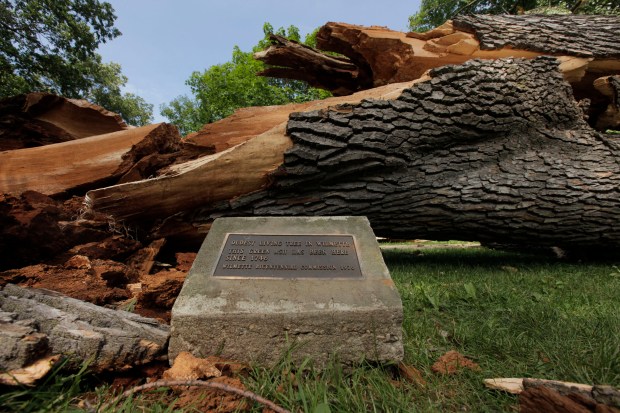Here’s a look back at what happened in the Chicago area on July 11, according to the Tribune’s archives.
Is an important event missing from this date? Email us.
Weather records (from the National Weather Service, Chicago)
- High temperature: 97 degrees (1936)
- Low temperature: 50 degrees (1996)
- Precipitation: 1.81 inches (1922)
- Snowfall: None
1915: “Jazz” was used in the Tribune to describe music for one of the first times in history.
 A sailboat departs Chicago on Lake Michigan with the skyline showing Sears Tower on July 12, 2003. (Milbert O.Brown/Chicago Tribune)
A sailboat departs Chicago on Lake Michigan with the skyline showing Sears Tower on July 12, 2003. (Milbert O.Brown/Chicago Tribune)
2003: Sears Tower was transferred to its lender (Metlife Inc.) to prevent the skyscraper’s owner (Trizec) from defaulting on its massive mortgage.
Anxiety over a possible terrorist attack on the world’s then second-tallest building dramatically reduced the attractiveness of the 110-story tower at 233 S. Wacker Drive to some existing tenants and many prospective ones.
Real estate magnate Joseph Chetrit, developer Joseph Moinian and Skokie-based American Landmark Properties bought the tower for $840 million in 2004. Blackstone Group purchased it in 2015. Sears gave up ownership of its namesake tower in November 1994.
Though it remains popularly known by its maiden name, it was officially renamed Willis Tower for a London-based insurance brokerage in 2009.
 A tree recognized as the oldest in the village of Wilmette sits in pieces after it was destroyed by a fierce storm on July 11, 2011. The so-called “Bicentennial Ash” in Gillson Park existed since 1746. A plaque commemorated its status. (Terrence Antonio James/Chicago Tribune)
A tree recognized as the oldest in the village of Wilmette sits in pieces after it was destroyed by a fierce storm on July 11, 2011. The so-called “Bicentennial Ash” in Gillson Park existed since 1746. A plaque commemorated its status. (Terrence Antonio James/Chicago Tribune)
2011: Up to 75 mph winds ripped down power lines, tossed trees onto roads and railroad tracks and forced businesses to close for the day. During the storm’s peak, it was estimated 868,000 ComEd customers were without power — more than in any storm in at least the previous decade. Despite the winds, the storm brought little rain.
‘It almost sounded like a hurricane’: Derecho weather events in the Chicago area since 1965
One Union Pacific North line train was stuck for hours on the tracks after tree limbs and fallen power lines blocked it. It was scheduled to arrive at Ogilvie Transportation Center at 9:05 a.m., but didn’t arrive until about 2 p.m.
Several Cook County jail inmates and a Cook County sheriff’s deputy were injured while dismantling a festival tent as part of a community service project in Palos Hills, but not seriously.
Want more vintage Chicago?
Subscribe to the free Vintage Chicago Tribune newsletter, join our Chicagoland history Facebook group, stay current with Today in Chicago History and follow us on Instagram for more from Chicago’s past.
Have an idea for Vintage Chicago Tribune? Share it with Kori Rumore and Marianne Mather at krumore@chicagotribune.com and mmather@chicagotribune.com
Originally Published: July 11, 2025 at 4:00 AM CDT
